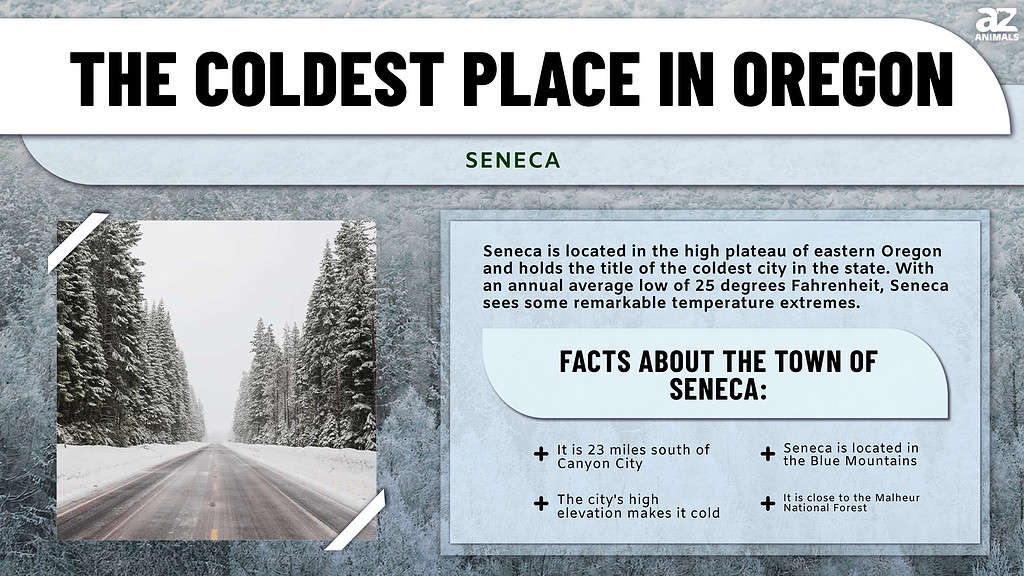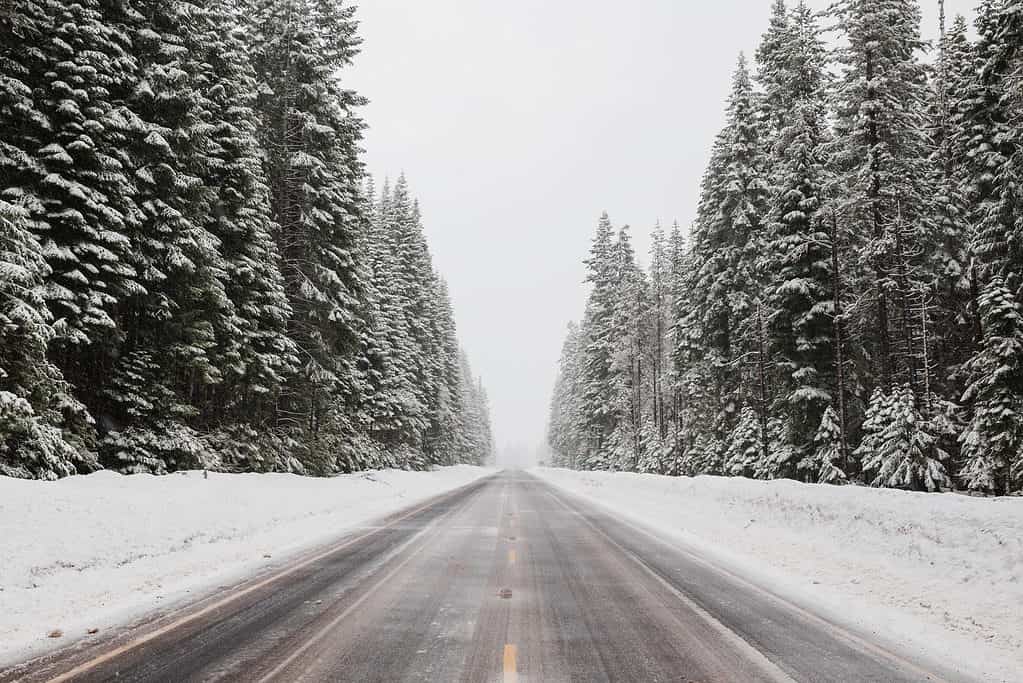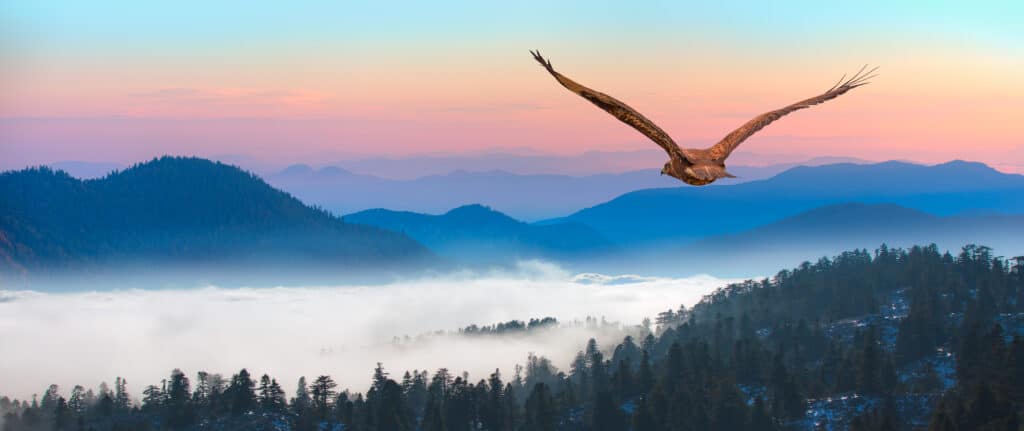
Located in the Pacific Northwest, Oregon can experience temperatures that drop below freezing. In fact, it holds cold temperature records for all states in the PNW. Today, we’re learning about one famously cold town, along with factors that contribute to its frigid temperatures. From its elevation and geographical location to its weather patterns, we will discover the coldest place in Oregon! Let’s get started.
The Coldest Place in Oregon

Seneca is surrounded by beautiful natural landscapes, including the Malheur National Forest.
©iStock.com/Attila Adam
Seneca, located in the high plateau of eastern Oregon, is the coldest city in the state. With an annual average low of 25 degrees Fahrenheit, Seneca experiences some amazing temperature extremes. Located in Grant County, Seneca is situated in the Blue Mountains, about 23 miles south of Canyon City. It is easily accessible via U.S. Route 395 and is located on the edge of the Malheur National Forest. The population of Seneca was just 199 at the 2010 census, making it an extremely small town. Its primary industries are ranching and logging.
There are several factors that contribute to the chilly temperatures in Seneca. The city’s high elevation, due to its location in the high plateau of eastern Oregon, plays a significant role. The Blue Mountains also create a rain shadow, which results in lower humidity and dry air, leading to cooler temperatures. Additionally, the city is located in a valley, which allows cold air to sink and become trapped.
Despite its cold temperatures, Seneca is a popular destination for outdoor lovers. The city is surrounded by beautiful natural landscapes, including the Malheur National Forest, which offers hiking, camping, and fishing. If you’re looking to experience some of Oregon’s most extreme temperatures, a visit to Seneca is a must. Just be sure to pack accordingly!
The Coldest Temperature Ever Recorded in Oregon

This terrain of the Blue Mountains creates a rain shadow that results in lower humidity and dry air.
©muratart/Shutterstock.com
While not always the case, the coldest temperature ever recorded in Oregon happens to be in the same place as the lowest average temperature: Seneca! In 1933, the city set the cold temperature record for the entire Pacific Northwest. The infamous frigid day measured in at an astounding -54 degrees Fahrenheit.
One reason for the extreme cold in Seneca is its location in the Blue Mountains. This terrain creates a rain shadow that results in lower humidity and dry air. This dry air, combined with Seneca’s relatively high elevation and clear skies, allows for radiational and surface cooling. Additionally, the high Cascade Mountains isolate Seneca from the moderating influences of the Pacific Ocean.
Seneca is not just known for its extreme cold “one-off” temperatures. The city has also experienced multi-day periods of temperatures below -40 degrees. This occurs when an arctic air mass spreads over the region, as happened in 1989.
The General Weather of the Pacific Northwest

The Pacific Northwest has a marine climate, which means it is influenced by the Pacific Ocean.
©jejim/Shutterstock.com
The Pacific Northwest is located in the northwest corner of the United States and includes Oregon and Washington. The weather in this region is known for being mild and wet, with temperatures ranging from cool to moderate throughout the year. The Pacific Northwest has a marine climate, which means it is influenced by the Pacific Ocean. This results in relatively mild temperatures. Average highs range from the mid-50s to mid-60s, and average lows range from the mid-30s to mid-40s.
Since the region is relatively mild, the weather in Seneca stands in stark contrast to the rest of the area. This emphasizes how important geography is in determining the weather of a certain region.
Annual Snowfall in Oregon

The mountainous eastern part of the state receives a lot of snow.
©iStock.com/Rex_Wholster
Oregon has a split climate when it comes to snowfall, meaning that the coastal regions receive little to no snow, while the mountainous eastern part of the state receives a lot of snow.
On the coast, Oregon experiences the least amount of snowfall, with an average of less than one inch. However, in the eastern half of the state, where the elevation is over 2,000 feet, the average snowfall increases to 10 inches throughout the winter. The Cascade Mountain Range, which cuts through the middle of the state, also affects snowfall patterns. This region experiences an average of 89.3 inches of snowfall and a median of 20 inches. While it is possible to experience heavy winters in Oregon, it is more likely that the state will see around 20 inches of snowfall in a given winter.
Up Next:
- Discover the Coldest Place in California
- Discover the Coldest Place in Florida
- Discover the Coldest Place in New York (-52°F!)
The photo featured at the top of this post is © Quinn Aikens/Shutterstock.com
Thank you for reading! Have some feedback for us? Contact the AZ Animals editorial team.







